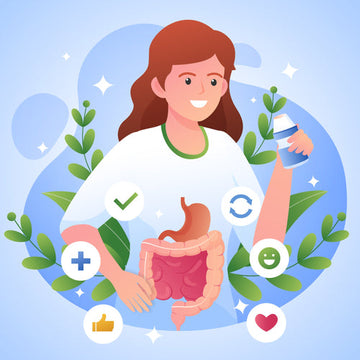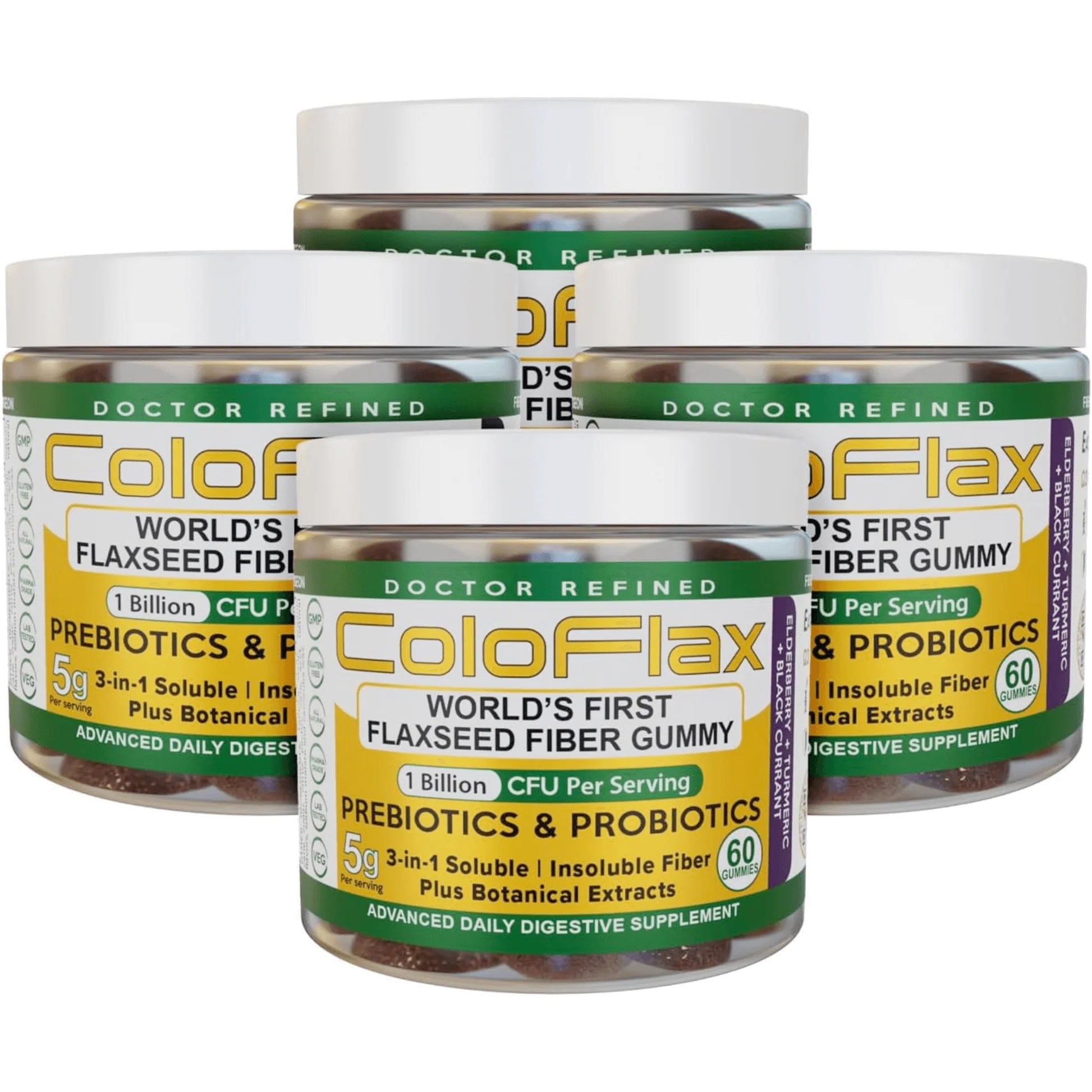Omega-3 fatty acids are never too far from the conversation when it comes to superfoods. They’ve made the headlines a fair few times as well, with claims that they can boost brain power, improve joint health, and even reduce your risk of a heart attack.
But what’s the truth—are omega-3 fatty acids as healthy as claimed?
In the following guide to omega-3s, we’ll cover all of the following questions and more:
- How do omega-3 fatty acids work?
- What are the types of omega-3s?
- What’s the difference between omega-3 and omega-6?
- What are the benefits of these fatty acids?
- What are the best sources of omega-3s?
What are Omega 3 Fatty Acids?
Omega-3 fatty acids are essential polyunsaturated fats obtained from dietary sources. This means that your body needs them, but doesn’t produce them, so you need to give it a helping hand by consuming foods rich in omega-3s.
Although we often think of omega-3 as a single fatty acid, there are actually many fatty acids that fall under this umbrella. The most abundant and important of these fatty acids are ALA, DHA, and EPA:
ALA (Alpha-Linolenic Acid)
ALA is the most common omega-3 fatty acid and is often found in plant-based foods, including our favorite food of all, flax. Most ALA is used for energy, but a small percentage is converted into EPA and DHA.(1)
DHA (Docosahexaenoic Acid)
DHA is found in fatty fish and seafood, as well as algae. It plays an important role in the brain and is the main fatty acid found in the retina and central nervous system.(2) It’s also very important during infancy, playing a key role in brain development, which is why pregnant women are often advised to take DHA supplements.
EPA (Eicosapentaenoic Acid)
EPA is used in many bodily functions and is thought to have an anti-inflammatory effect. It is mainly found in fatty fish and seafood.
Omega-3 vs Omega 6
Omega-3 and omega-6 are both polyunsaturated fats and they are very important for your health. Just like omega-3, omega-6 is essential and isn’t produced by the body, so you can only get it from food or supplementation.
For optimal efficiency, both of these fatty acids are required and should be consumed in balance. However, the Western diet tends to be very high in omega-6 and very low in omega-3, throwing that balance out of kilter.
It is thought that a diet high in omega-6 and low in omega-3 could have an inflammatory effect, potentially increasing the risk of chronic disease.(3)
Our ancestors had a much healthier balance of omega-3 and omega-6 fatty acids, somewhere around 1:1. For much of our history, we may have evolved consuming a ratio between 1:1 and 4:1, which means we were eating between 1 and 4 grams of omega-6 for every 1 gram of omega-3.(4)
These days, however, the ratio is closer to 16:1.
Sunflower oil, corn oil, canola oil, soybean oil, peanut oil, and cottonseed oil are all high in omega-6 fatty acids. Our increasing reliance on these foods is part of the reason behind this shift in balance.
Conversely, olive oil, coconut oil, and even butter are all very low in omega-6 fatty acids. Flaxseed oil has a moderate amount, but this is balanced by a greater concentration of omega-3s.
What are the Benefits of Omega 3 Fatty Acids?
Omega-3s are very important, there’s no doubt about that. They play many important roles in the body, and deficiency could increase your risk of a host of illnesses and ailments. However, there’s a lot that we don’t know and these compounds are still being studied.
The following benefits cover some of the most noteworthy claims made about omega-3s, and what’s great about them is that they are all based on scientific studies:
They Could Help in the Treatment of Depression
There have been numerous studies concerning the effects of omega-3s on depression and anxiety. Some of these have been very positive, others have been inconclusive. In 2011, a large meta-analysis looked at studies conducted between 1960 and 2010 and noted an overall improvement in depression scores.(5)
The study concluded that “Supplements containing EPA ≥ 60% of total EPA + DHA, in a dose range of 200 to 2,200 mg/d of EPA in excess of DHA, were effective against primary depression.”
A study conducted on young adults arrived at similar conclusions, noting a significant reduction in depression scores in a relatively short space of time.(6)
Of course, that doesn’t mean that omega-3s will work for you, and it definitely doesn’t mean that they can be used in place of prescription medication or other treatments prescribed by a healthcare professional. But the great thing about these fatty acids is that they are natural, safe, and can be used in combination with other treatment options.
They Can Improve Brain Health and Reduce Cognitive Decline
Although much more research is needed, it has been suggested that omega-3s could decrease age-related cognitive decline and reduce the risk of Alzheimer’s disease.(7)
It has also been suggested that omega-3 supplementation could aid in the development of infant brains and eyesight when added to baby formula.(8) It may even help to improve the cognition and intelligence of the child when they reach their formative years.(9)
Contrary to popular belief, there is very little evidence suggesting that omega-3 supplementation can boost your memory and brain power over the short term. But it does seem to have an effect in the long term.
They Can Reduce the Risk of Heart Disease
Heart disease is the biggest killer in the United States, and the high rates are largely attributed to diet and lifestyle, including a reliance on processed food and refined sugars. Eating more fatty fish could balance this issue and greatly reduce the risks.
Omega-3 fatty acids are known to improve cholesterol, blood pressure, and inflammation, all of which can contribute to heart disease.(10) (11) (12) (13)
Of course, omega-3s are not a magic wand, and they can’t undo the damage done by a diet of processed food, alcohol, cigarettes, and minimal exercise. But they could help to turn things around and are very beneficial when consumed as part of a healthy diet.
The omega-3 fatty acids found in oily fish, seeds, and other whole foods are thought to be one of the reasons the Mediterranean diet is so healthy.(14) People in Greece, Italy, and Spain consume lots of fresh fruit and eat a diet rich in vegetables, fruit, and pulses, with minimal dairy, refined sugar, and fast food.
They Could Protect Again Some Forms of Cancer
A 2007 study conducted in Scotland found a direct correlation between omega-3 fatty acid supplementation and a reduced risk of colorectal cancer.(15) More importantly, the study found that the risk was dose-dependent, which means that the more omega-3s consumed by the subjects, the greater the reduction was.
It’s easy to get carried away when hearing about something that could prevent or treat cancer, but it’s important to remember that there are many variables at play. What’s more, we already know that a balanced and healthy diet (including minimal saturated fat, refined sugars, and processed meat) can reduce cancer risk.
Omega-3s play a small part in that, but it’s a very important part. In other words, it doesn’t mean that supplementing with omega-3s will stop you from getting cancer. But rather it means that using them as part of a balanced diet can provide some protective benefits.
Other Benefits of Omega-3 Fatty Acids
The above are just a few of the benefits linked to the regular consumption of omega-3 fatty acids. Research suggests that they could also improve bone health, joint health, and the symptoms of autoimmune disease. They may even assist with childhood asthma.
More research is needed before concrete conclusions can be drawn, but as omega-3s are safe and tolerated in high doses, there’s no harm in adding them to your diet.
How Much Omega-3 Do You Need?
You can get your fill of essential fatty acids by consuming oily fish, seafood, flaxseed, and other sources (see below). You need to eat just a couple of portions of fatty fish a week to meet your required intake of these healthy compounds.
If you’re not a fan of fish or seeds, supplementation is just as effective. In fact, while it’s best to get nutrients from food where possible, most of the studies conducted on omega-3 have used supplements.
It’s recommended that you consume between 250mg and 500mg of omega-3s a day. Ideally, it should be a combination of EPA and DHA.
What are the Best Sources of Omega 3?
Oily fish like mackerel, salmon, sardines, and anchovies have some of the highest concentrations of omega-3 fatty acids. Oily fish contains a balance of DHA and EPA, and it is also rich in protein and minerals.
Fat tends to get a bad rap, as it is closely linked to an increased risk of heart disease. But not all fat is equal.
Saturated fat is what you need to avoid. Found in animal fats like butter, cheese, and fatty cuts of meat, saturated fat can clog your arteries and excessive consumption may increase your mortality risk. Polyunsaturated fat, however, can improve your cardiovascular health, and omega-3s fall under this umbrella.
Don’t be afraid of consuming a little oily fish every now and then, but try to limit your consumption of processed meats, cheese, butter, lard, and other animal fats.
These are the best sources of fish-based omega-3 fatty acids:
- Mackerel = 4,500mg per Serving
- Herring = 2,100mg per Serving
- Salmon = 2,100mg per Serving
- Sardines = 1,400mg per Serving
- Anchovies = 400mg per Serving
- Oysters = 330mg per Serving
What are the Best Sources of Omega-3s for Vegetarians and Vegans?
Chia seeds contain over 5 grams of omega-3 fatty acids per serving, making them one of the best sources of this fatty acid. Flaxseeds are also rich in omega-3s and contain more of these fats per serving than sardines, salmon, and herring.
Seaweed, algae, hemp seeds, edamame, walnuts, and wheat germ are also good sources.
Conclusion: The Benefits and Uses of Omega-3 Fatty Acids
Your body needs omega-3 fatty acids, and it needs them in balance with omega-6 fatty acids. Yet, if you’re like the average American, you’re consuming very little of these fats and it could be adversely affecting your health.
The goal is not to increase your omega-3 consumption until it is in line with your omega-6 consumption. The result would be an excessively fatty diet, one that could do more harm than good. Instead, consider swapping omega-6 oils for omega-3 alternatives, such as using olive oil instead of canola/sunflower oil and adding a little flaxseed oil to salads and stews.
For a simpler way to stay healthy and meet your omega-3 requirements, pick up some COLOFLAX. It contains a blend of soluble/insoluble fibers, prebiotics, and probiotics, and can support digestive health.
References
- https://pubmed.ncbi.nlm.nih.gov/16828546/
- https://pubmed.ncbi.nlm.nih.gov/15812120/
- https://pubmed.ncbi.nlm.nih.gov/19022225/
- https://www.sciencedirect.com/science/article/abs/pii/S0753332206002435
- https://pubmed.ncbi.nlm.nih.gov/21939614/
- https://www.sciencedirect.com/science/article/abs/pii/S0165178115003844
- https://pubmed.ncbi.nlm.nih.gov/19262590/
- https://pubmed.ncbi.nlm.nih.gov/24150114/
- https://pubmed.ncbi.nlm.nih.gov/12509593/
- https://pubmed.ncbi.nlm.nih.gov/16879829/
- https://pubmed.ncbi.nlm.nih.gov/16879829/
- https://pubmed.ncbi.nlm.nih.gov/19487105/
- https://pubmed.ncbi.nlm.nih.gov/14505813/
- https://health.usnews.com/best-diet/best-diets-overall?src=usn_pr
- https://pubmed.ncbi.nlm.nih.gov/17493949/






